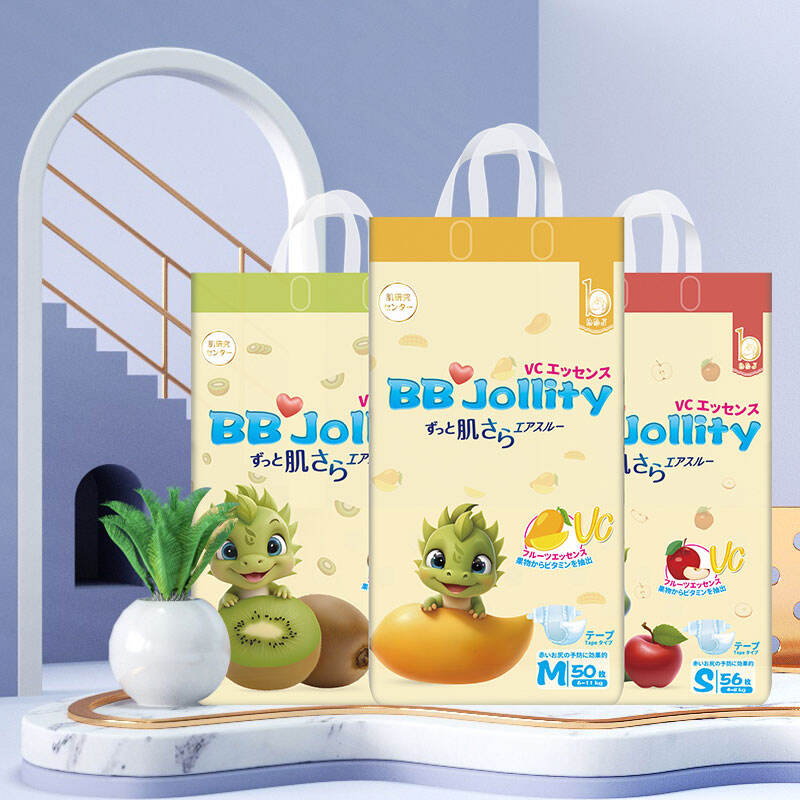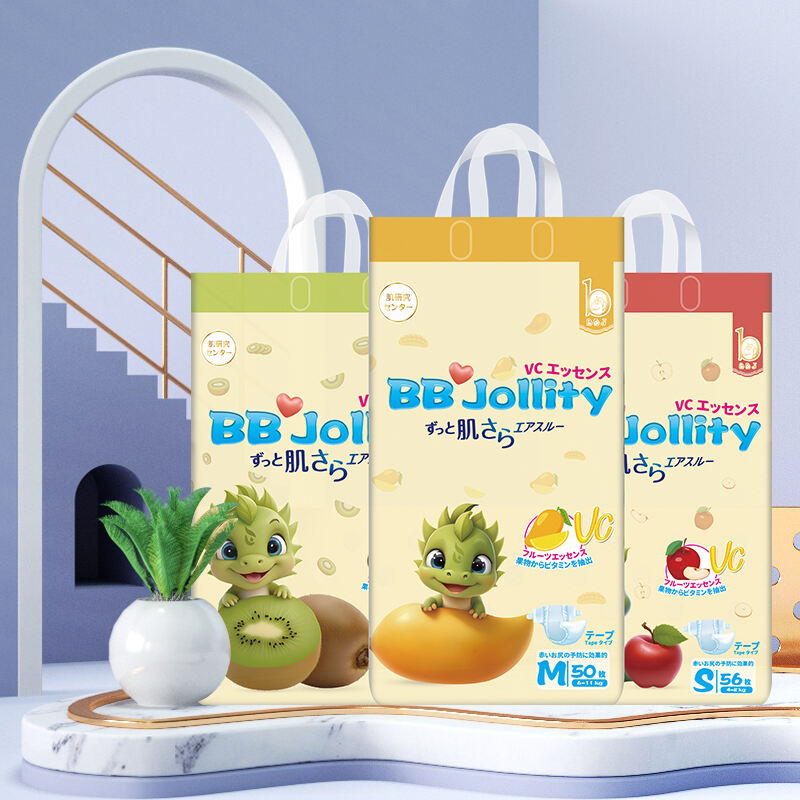Struggling with Baby Diaper Rash? Pick the Right Diaper for Prevention!
Understanding baby diaper Rash: Causes and Symptoms
Common Causes of Skin Irritation
Diaper rash can arise from prolonged exposure to moisture, which is a primary cause of skin irritation. When a diaper is left on for too long, the warm and moist environment can promote the growth of bacteria and fungi, leading to rashes. In addition, friction between the diaper and the baby's sensitive skin can exacerbate irritation, resulting in redness and discomfort. Some infants may experience allergic reactions to specific brands of diapers or wipes, triggering rashes and causing irritation. Another factor contributing to diaper rash is the introduction of new foods, which can alter stool consistency and increase the likelihood of developing rashes. Heat, humidity, and infrequent diaper changes are also known to exacerbate this condition.
Recognizing Early Warning Signs
Recognizing early signs of diaper rash is key to preventing it from worsening. Redness and slight irritation in the diaper area are typically the first indicators of diaper rash. Parents should be vigilant and look for areas of discoloration, particularly in skin folds, as these can often hint at the onset of a rash. Additionally, babies may show signs of discomfort, such as fussiness or crying during diaper changes, indicating irritation. Observing changes in your baby's behavior, like increased sensitivity to touch, can also signal the need for intervention. By frequently checking the diaper area, parents can catch early signs and take steps to address the issue promptly, preventing escalation and promoting healthier skin care routines.
Key Features of Rash-Preventing Diapers
Breathability and Moisture Control
Breathable diapers are essential in preventing diaper rash, as they facilitate air circulation which curtails moisture buildup directly linked to skin irritation. When wetness is drawn away from the skin by moisture-wicking materials, the risk of rashes is significantly reduced. Studies have demonstrated that diapers with improved breathability can effectively reduce the occurrence of diaper rash. Additionally, these diapers enhance moisture control by keeping the skin dry and healthy, which helps minimize irritation and potential infections. The use of breathable fabrics not only boosts comfort but also plays a crucial role in safeguarding against infections.
Hypoallergenic Material Considerations
Selecting diapers made from hypoallergenic materials is a crucial step in minimizing allergic reactions and potential diaper rashes, particularly in infants with sensitive skin. It is beneficial for parents to choose diapers devoid of dyes, fragrances, and harsh chemicals, as these ingredients often lead to skin reactions. Many hypoallergenic products undergo dermatological testing to confirm their safety for baby use. By opting for such products, the chances of rashes are significantly lowered, particularly for children predisposed to sensitivities. Consulting with pediatricians about the best hypoallergenic materials can provide valuable guidance for informed decision-making.
Proper Fit for Reduced Friction
A proper fit in diapers is vital to prevent chafing and friction that can lead to skin irritation. Diapers that fit too tightly can restrict airflow and trap moisture, worsening conditions for diaper rash. Selecting adjustable sizes can accommodate the rapid growth of babies and ensure ongoing comfort. Trying out different brands to discover the most suitable fit can also help reduce irritation for active babies. Parents should routinely check the diaper's fit as the baby grows, ensuring it remains snug but not restrictive, thereby providing optimal comfort and reducing the likelihood of skin irritation.
Top Diaper Choices for Sensitive Skin
Baby Jollity Diaper Type: Skin-Friendly Protection
When it comes to protecting delicate skin, Baby Jollity diapers are a top contender. They are crafted from ultra-soft materials specifically designed to prevent irritation for sensitive skin, making them a preferred choice for many parents. Moreover, these diapers offer excellent moisture control and breathability, promoting skin health and effectively preventing diaper rash. Many user reviews highlight their success in maintaining skin integrity, and dermatologists frequently recommend Baby Jollity as a prime option for sensitive skin. With various sizes available, they cater to the evolving needs of growing infants, ensuring a snug and comfortable fit.
Hiisoft Ultra Absorbency Diapers
Hiisoft diapers are renowned for their remarkable absorbency, keeping your baby's skin dry all day. These diapers are designed to handle high levels of liquid, ensuring skin health is never compromised. Many parents report a noticeable decrease in the occurrence of diaper rash when using Hiisoft, attributing it to their effective design. Additionally, the availability of multisized options ensures a perfect fit that enhances comfort and reduces irritation. Clinically tested and proven safe, these diapers are perfectly suited for infants with sensitive skin. The consistent feedback from users further elevates Hiisoft as an ideal choice for sensitive skin.
Breathable Tape-Style Options
Tape-style diapers represent a versatile choice for parents seeking convenience and skin health. These diapers feature breathable designs that allow airflow, critical for preventing moisture-related rashes. Parents often commend the swift and easy taping system, which facilitates quick diaper changes—a must for busy caregivers. With the market's emphasis on breathable materials, this style aligns with the growing trend of improving infant skin health. Consumer testimonials repeatedly emphasize the comfort and performance of these tape-style diapers, positioning them as an excellent option for babies with sensitive skin needs.
Daily Prevention and Care Strategies
Optimal Diaper Changing Routines
Regular and strategic diaper changing routines are crucial in minimizing skin exposure to moisture, which is essential for preventing irritation. Ideally, diapers should be changed every 2-3 hours to ensure dryness. Implementing frequent checks for wetness can help preemptively address potential problems before they escalate into a rash. It is beneficial for parents to establish a consistent routine, particularly after feeding times, to monitor and change diapers promptly. Utilizing a designated changing area can streamline these processes, ensuring safety and efficiency. In addition, maintaining a stockpile of necessary supplies, such as diapers and creams, nearby can facilitate timely changes and help avoid last-minute scrambles. By incorporating these routines into daily care, we significantly improve skin safety and contribute to overall diaper health.
Combining Barrier Creams with Quality Diapers
To effectively prevent diaper rash, combining barrier creams with high-quality diapers is one of the most recommended approaches. Barrier creams play a pivotal role in creating a protective layer that shields the skin from moisture and irritants, reducing the risk of rashes. Creams containing zinc oxide are particularly valued for their additional protective benefits. For optimal effectiveness, it's crucial to apply these creams correctly, concentrating on areas most prone to irritation. When used together with quality diapers, this strategy becomes an essential part of diaper safety and skin care. Pediatric experts often endorse this dual approach as it addresses both the moisture issue and skin protection, ensuring healthy and irritation-free skin for babies. By aligning these tools with daily diapering routines, we lay a foundation for optimal skin health.
When to Consult a Pediatrician
Persistent Rash Despite Prevention
When a baby's diaper rash persists despite preventive measures, it might be time to consult a pediatrician. Diaper rashes that linger for more than three days can indicate underlying conditions that require medical attention. Tracking the duration and progression of the rash is beneficial, as it provides valuable information for the physician. Persistent rashes could signify a diaper allergy, suggesting that a change in the brand or type of diaper might be necessary. Ignoring ongoing symptoms can lead to more serious issues, hence timely medical advice is crucial for diagnosing and addressing any hidden concerns, ensuring the baby's comfort and health are prioritized.
Signs of Infection or Allergic Reaction
It is important to consult a pediatrician if there are alarming signs of infection or allergic reactions. Symptoms like swelling, blisters, or pus are indications of an infection that needs immediate medical intervention. If home preventive measures are not effective and symptoms worsen, seeking professional advice is essential. Observing behavioral changes in the baby could signal an allergic reaction to products like diapers or wipes. Additional symptoms such as fever or unusual irritability should be documented, as they can assist doctors in diagnosing the issue accurately. Consulting a pediatrician within 24 hours is recommended if infections or severe reactions are suspected, ensuring prompt and appropriate treatment.








